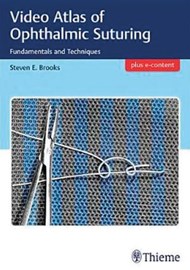Good suturing technique is a fundamental requirement of all surgeons. With the advent of modern minimal suturing and sutureless techniques, junior doctors have less exposure and hence less experience with suturing skills. Good microsurgical suturing skills can only be mastered after better understanding of suture materials, suture needles, tissues to be sutured etc. This book is exemplary in portraying the information using a combination of text, illustrations and videos.
Dr Brooks has divided the book into various chapters reinforcing the basics and making it easier for the apprentice to understand and practice. The video tutorials break down the suturing process into small steps, and provide technical and practical advice on how to master the skill.
Often the issue of safe handling of needles and suture material is not discussed during training, the author has a dedicated chapter on how to avoid these incidents. The early chapters on various suture materials, mechanical and performance properties and suture needles are crucial for a consistent result after surgery. The book goes on to explain the general technique and more tissue specific considerations (symmetry, depth, distance, drag) which will be useful for inexperienced surgeons.
The video tutorials on different suturing techniques is basic but excellent, and will help the trainee in understanding the techniques but is not a substitute for practice. The chapter on knots – techniques and different configurations is invaluable for the beginner. The book ends with a chapter on common errors made by the beginner ophthalmic surgeon. By becoming aware of these errors it should help in preventing these mistakes.
Overall, the book provides excellent practical information, technical pearls and is presented in an outstanding format. A must read for all junior ophthalmic trainees.




